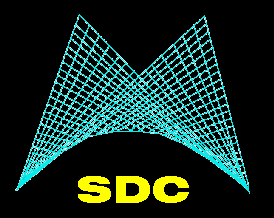SANDIN, N. A., COMPUTER
|
|
SYSTEM DEVELOPMENT CORPORATION |
In my last year of college at Michigan State University (MSU) I had started looking for a real job. At the Placement Office I looked through the job files backwards. Instead of looking at particular jobs and then seeing if I qualified, I looked at qualifications and then what the job was. That was in 1962 and card after card that had my qualifications turned out to be computer programming.
When Kimberly Clark fell apart for me, I set out for CA. I stayed briefly with Francis Munsch, a fellow I had worked with at Aldrich Stores. Someone in his parish worked for a company called System Development Corporation (SDC) and Francis gave me his business card. I called him, got an invitation to visit, picked up an application, submitted it, and was called in for a battery of tests. I took the tests and received an offer as a computer programmer (trainee) at about $530 a month.
The very first major computerized system in the world was the air defense system for the US (Semi Automatic Ground Environment - SAGE). The job was awarded to Rand Corporation with the understanding that their System Development Division would break off and become a separate company – SDC. When I joined SDC, SAGE was operational and they were bidding on a major system for the Army at Ft. Huachuca. SDC was hiring madly, running a 13-week training course with a twenty person class starting every month, and trying to generate enough junior programmers to replace experienced SAGE programmers who would then work on the Ft. Huachuca contract. My class was to start about two months from the offer.

Mockup of the Computer Room of a SAGE site with the consoles of dual AN-FSQ-7 computers (actual sites had no windows)
I ran out of money while waiting for the programming job to start. I went to the nearest print shop to my apartment but they didn’t need help. The owner told me that a lady in a print shop nearby had just lost her husband, so I went there, told her I needed a short-term job, and she hired me. I worked full time at Masters Printers for a couple of months doing job printing. I ran an automatic Heidelberg press just like the one Watkins had during my last year of college. After my programming job started, I continued to work part time at Masters for a couple of years, especially when the press man went on his two-week National Guard trips.
At SDC, I went through the training with flying colors. However, just at the end of the class, SDC lost the Ft. Huachuca bid, and suddenly found themselves with a glut of untried, unproven, junior programmers, with two more classes one and two months behind mine. SDC fired the class that had just started, allowed the one that was more than half done to complete and then fired them, and promised us that they would try to place us. About half of our class was placed. My performance in the class gave me perhaps the best assignment of all. I was put to work on a JOVIAL compiler to be used interactively with the first time-sharing system in the world, then under development at SDC in competition with MIT. The head of the project was Jules Schwartz, the person who conceptualized JOVIAL (Jules Own Version of the International Algorithmic Language). The concept of time-sharing is now so common that the smallest personal computer has the capability. Although it was not apparent to me at the time, I was on the forefront of computer software technology.
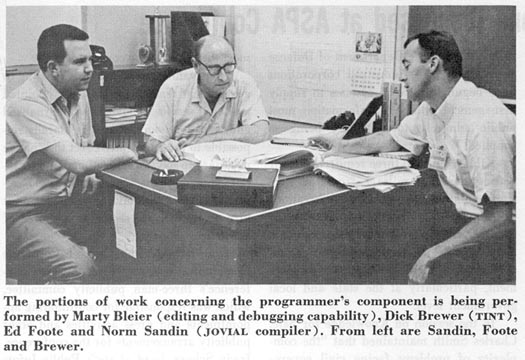
One of my first assignments at SDC was to complete and submit a Personal Security Questionnaire (PSQ) for a security clearance. I had to account for my whereabouts and activities since birth, and believe me that wasn’t easy. Nowadays childhood is usually excluded, but at that time everything counted. After several months of investigation, the Defense Investigative Service found me worthy of a Secret clearance. I maintained a clearance at one level or another from then until I retired. Security was one of the three tar babies that I touched, stuck fast to, and could never get rid of. The other two were formal software testing and computer hardware. The day before retiring, I was responsible for all three! On the other hand, they made me a pretty good living.
I continued to work on JOVIAL compilers for several years. In early 1969, I had an opportunity to go to Bangkok, Thailand. Clae and I had married in June of 1968 and she was still working at SDC. We talked it over and decided to go. SDC had a contract with the Advanced Research Projects Agency (ARPA) to introduce computers to Thailand, and do good works. The contract was a bit vague, but the spirit of it was to help Thai academia and military move into computerization. There were three of us SDC employees there. Initially, we were allowed to use the second floor of the Electrical Engineering building at Chulalongkorn University in Bangkok. We had an IBM 1800 computer with card reader-punch, printer, two 9-track tape drives, a disk, and several terminals. One of the terminals was a Shinko, complete with both the English and the Thai character sets. Dave Londe of SDC worked with Dr. Udom Warotamasikkhadit, a Thai linguist we hired, to build a Thai to English alphabet transliteration program. Dick Beeler of SDC was our lead. He built the driver for the Shinko teletype. I converted a 26-pass card-oriented FORTRAN compiler into a 6-pass tape-oriented, and built a time-sharing program for the 1800 for demonstration purposes. We hired about 10 Thais and taught them assembly language and FORTRAN programming.
Later we moved our offices out of Chula and into a Thai military building. We set up the time-sharing system and gave an endless series of demonstrations. We ran classes for officers of the Thai Supreme Command. We tried hard to make a difference, with what I believe was minimal success. It is difficult at best for westerners to cope with South East Asia. It is a different world, a different philosophy, a different life style, and a totally different value system. For example, the most popular part of the demonstrations was not the fact that six people could use the computer concurrently, not the fact that you could construct a FORTRAN program and compile it interactively, and not that you could turn text typed in the Thai character set into text printed in the English character set. No, the most popular part of the demonstrations was a program we ginned up to give you a horoscope using a random look up into a set of canned messages.
Clae and I were in Thailand for about 27 months. Norman Albert Sandin, Jr. was born there. The three SDC employees and 11 or so Thai hires spent about a million dollars.
See Ponograms #28 – Three Kings of Orient, #29 – Year of the Rooster, #31 – Bellybuttons & Maggots, #35 – Hands Off, Boots On for more about our stay in Thailand.
SDC was a non-profit Air Force captive organization when I joined them. They went profit making just before I left, Burroughs purchased them soon after I left, and eventually what was left of the SDC identity became a part of Unisys. The old buildings in Santa Monica located on Colorado and Olympic are all gone.
On our return from Bangkok, SDC had very little new business. I missed a chance to go to Germany by just a few weeks. SDC offered to send me to VA, but we wanted to stay in CA. In fact, we bought our house in San Fernando Valley before finding out about a new assignment. SDC ended up laying me off. Since the new house was a fixer, I planned to stay at home for a while and work on it. However, three of my poker buddies got me interviews at three different companies, and I ended up going to work for Abacus Programming Corporation (Abacus).

My first assignment for Abacus was at Litton Ship Systems (Litton) in Culver City. They were building the operating system for the DD963 Destroyer for the US Navy. The ships were being built in Pascagoula, MS. Until the DD963, ships were built one up – that is each one was unique, and the drawings and documents for one ship were not valid for another, even one in the same class. This was the first ship fully designed and documented ahead of time, and then replicated. I validated the CMS-2 compiler supplied by Univac in MN, worked on testing the ship operating system, and built a simulator for the sonar capability. I was there for about 2 years. I was back at Litton some time later to give a series of classes, teaching new hires the CMS-2 programming language.
After the Litton assignment I worked out of the Abacus home office for many years. Our primary activities were carve-out tasks on the Space Shuttle for Rockwell in Downey. The first one was to design a language and build a language processor that allowed a programmer to create a screen for one of the three displays in the cockpit using a higher order language instead of machine language. This capability was used by the astronauts to see and play with mockups of Shuttle displays and modify them easily. We did a series of about 10 tools like that, all related to the Shuttle. Other people at Abacus worked on the Backup Operating System that always ran in one of the five computers and had the job of returning the Shuttle to the ground in case the primary system failed.
The display language processor was known as SAV-D. I documented the capability and submitted it to National Aeronautics and Space Administration (NASA) Tech Briefs magazine and it was accepted for publication. It was also put into the COSMIC library of software developed with federal funds and therefore available to the public. I received $50 and an award from NASA and a matching $50 from Abacus for the effort.
I saw the first Approach Landing Test at Edwards Air Force Base when the basic Shuttle was taken up on a 747, released, and allowed to coast back for a landing. Over the years I saw the Shuttle do many wonderful things. I heard about the Challenger disaster when I was at work and felt it almost personally.
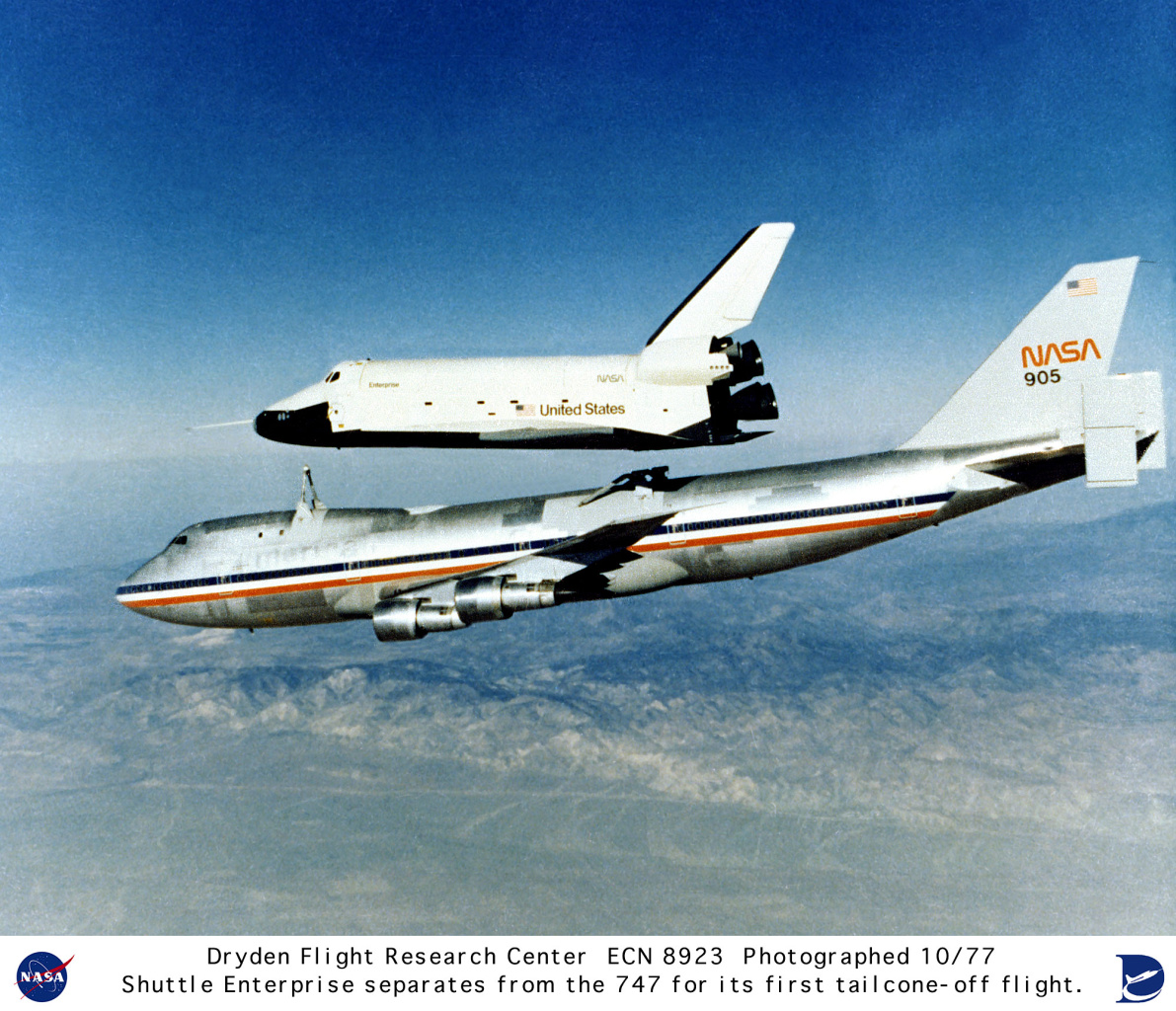
I became the manager of in-house activities at Abacus and at the peak of the company’s growth I was responsible for about 37 programmers. Over the 19˝ years I worked there, I participated in over 150 contracts. Besides DD963 and the Space Shuttle, we performed projects for the City and County of LA, Hughes, other branches of Litton, Rocketdyne, and innumerable smaller businesses. I was also Security Supervisor, Library Administrator, and Computer Hardware and Software Administrator.
Abacus still exists, but is a shadow of its former self. All of the founders and most of the original employees are gone.
Rockwell International
I left Abacus because their business simply went away. I was a manager without people or projects to manage. I spent the last year with Abacus working on a Rockwell proprietary project at Seal Beach. When the contract ran out, I joined Rockwell as an employee and continued to work on the same project. Someday I hope to finish this paragraph.
A few years earlier, Rockwell made a successful bid to operate the Maui Space Surveillance System (MSSS) atop Mt. Haleakalā on the island of Maui in Hawaii. At that time there were four mounts associated with MSSS, one of which held two telescopes. The mounts were all rather old, and much of the operation was manual. Rockwell formed a new company, Rockwell Power Systems (RPS), with different benefits and rates in order to win the operations bid.
Sometime later Senator Daniel K. Inouye talked the Air Force into installing a new telescope on the mountain and tying them all together with a state of the art computerized operating system. The new telescope was the Advanced Electro-Optical System (AEOS) and the new operating system was the Observatory Control System (OCS). AEOS had a 3.6-meter primary mirror and when completed was the largest in the world capable of tracking satellites. Just for comparison, the twin Keck telescopes on the neighboring Big Island have 10-meter primaries, but are not fast enough to track satellites. The Subaru telescope there has an 8-meter primary, and when completed was the largest one-piece primary in the world – the Keck primaries consist of many hexagonal pieces. The aging but upgraded Mt. Palomar telescope has a primary that is just over 5 meters (200 inches).
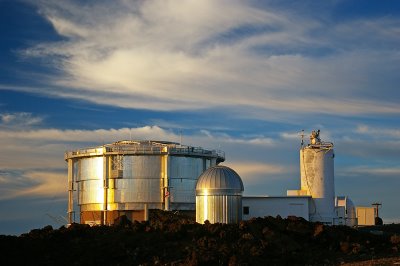
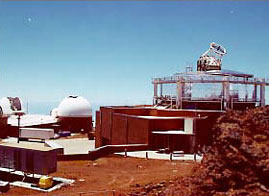
|
AEOS with conical dome up |
AEOS with dome down |
Rockwell sent me to RPS on loan labor to help out with the OCS. I ended up transferring to RPS, moving all my worldly possessions to Maui, and retiring on Maui, where I sit today writing this garbage.
I moved to Maui to be in charge of testing the software for OCS, but I ended up validating the requirements, finishing the design for the computer systems, and planning the integration, as well as contributing to system documentation, configuration management, security, and connectivity.
I went to work for Rockwell International. I spent time in Space Systems Division (which became Defense Systems Division), Rocketdyne Division, and a couple of others. In HI, I transferred to Rockwell Power Systems, a wholly owned subsidiary of Rocketdyne Division. At about that time, Boeing purchased the defense-oriented portions of Rockwell, and RPS went along. Our name was changed to Rocketdyne Technical Services, and I retired from Boeing North American, the parent organization. Confused? You should hear what I had to go through to retire. That would be another book.
Summary
In the Army, I WAS a computer – that was my job description – Sgt. Sandin, N. A., Computer. I suppose it was not surprising that I ended up making a living by using computers!
Somehow, in the description of the computer-related career, this dissertation doesn’t leave the reader with an idea of what I DID on a day-to-day basis. Let me try to rectify that. I began as a computer programmer. I wrote down the instructions that the computer executed to accomplish a specific task. Often the instructions were in a higher order language like JOVIAL, FORTRAN, CMS-2, or Ada, but other times the instructions were assembly language or machine language, closer to what the computer actually understood. In some less frequent cases, I communicated with the computer on a very personal basis, using switches, paper tapes, punched cards, or terminals to set or change individual bits within the computer. On still rarer cases, I kicked the damned thing.
Although I retained the capability to write, maintain, and massage code throughout my career, I rose above it for the most part. I moved quickly into the realm of managing programmers, writing documents, planning, scheduling, integrating, reporting, coordinating, trouble-shooting, proposing, hiring and firing, interfacing with customers, and of course the big three tar babies; security, formal testing, and computer hardware. Each time I moved to a new place (entry to SDC, SDC to Bangkok, SDC to Abacus, Abacus to Rockwell), I reverted to the basic computer programming skills initially, but within months or weeks I was into or back into the higher-level tasks listed above.
That about wraps it up. I’m sure I did a few other things not mentioned, but with Ponograms #45, #46, and #47 I think I covered the most significant jobs. Over the years my eighth grade starting wage of 35c an hour increased more than 100-fold. I more or less rolled with the punches or let the wind blow me where it would, but I was never sorry I got into computers. I had lots of interesting assignments and found myself on the cutting edge more than once. I traveled quite extensively with the Michigan State Highway Department, Army, SDC, and Rockwell/Boeing. I have lots of memories and made a lot of friends.
If you have managed to read this far and paid attention enough to have questions, please let me know. The 60 some years since I started working flew by, and the days continue to fly.
